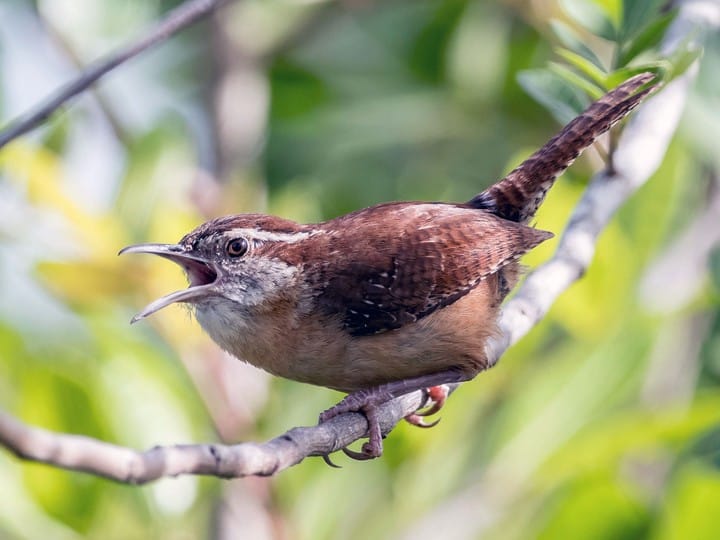On a dewy summer morning, Karla Rivera-Cáceres, an ornithology researcher at the University of Miami, crouched in her usual workspace –– the tall grasses of Costa Rica’s woodland –– and heard something unusual.
Rivera-Cáceres studies bird song, and that day she was listening to the canebrake wren, a brown bird whose bland appearance (it was once named the “plain wren”) belies an unusual and extremely complex call.
Canebrake wrens are songbirds, the subset of species whose calls develop beyond the standard tweet or chirp into full-fledged ballads –– and within that group they are part of a somewhat exclusive club: duetting birds.
When two of these wrens communicate, they weave their songs into an elaborate, Sonny and Cher-style duet. They warble back and forth, literally finishing each other’s phrases, with such high coordination that, to an outsider, they sound like a single voice.
But as Rivera-Cáceres sat listening that morning in 2011, she noticed something odd about this pair’s effort: their duet was really bad.
The birds were sloppy. They chirped over each other. They sang the wrong responses and screwed up the timing. They were young, still inexperienced at singing, and it showed. As birdsong goes, their act was like a five-year-old belting opera. In the world of bird science, her observation proved huge.
Namely: it demonstrated that birdsong works even more like language than we think –– that in order to achieve their Pavarotti-esque exchanges, wrens need to learn a specific set of social rules which are similar to what humans might call manners.
Rivera-Cáceres’ discovery launched her on a years-long research project at the University of Miami. This year, her findings were published in the journal Royal Society Open Science, and are already altering the way scientists conceive of birdsong.
“People think humans are so unique,” Rivera-Cáceres said, “But these birds are talking to each other, developing intimate codes. We’re not the only ones who communicate or hold complex thoughts.”
Humans have been fascinated by the music of birds for centuries. Expert bird watchers learn to identify species they might not even be able to see simply from their distinctive calls. Here, for example, is the call of the mangrove cuckoo, a small bird found mainly in coastal South Florida forests. For scientists, calls and songs can tell different stories. Most recently, according to a recent piece in the New York Times, researchers are increasingly finding that some birds are forced to alter songs to adapt to the surrounding din of humanity.
Comparisons between birdsong and human language date back to Darwin, Rivera-Cáceres said (“The sounds uttered by birds offer in several aspects the nearest analogy to language,” he wrote in The Descent of Man), and scientists have long studied how baby birds learn the tunes of their songs ––just like infants learns new words. One recent study found that genes in song birds might shed light on human speech disorders.
But Rivera-Cáceres’ focus was more like an avian Emily Post — she was interested in how those birds learned to use those songs and how their interactions reflected a set of shared social guidelines, much like the subtle norms that govern human conversation with friends, family, and romantic partners.
Source: Miami Herald, Full Article






